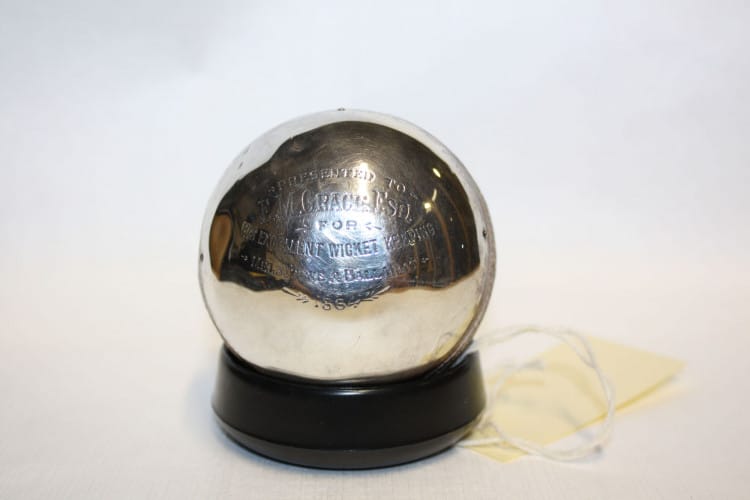- This cricket ball was presented to Edward Mills (E.M.) Grace following the 1864 cricket tour to Australia.
- Half of the leather cricket ball is covered in engraved silver-plate. It reads “Presented to E.M. Grace. Esq. For His Excellent Wicket Keeping Melbourne & Ballarat 1864”
- E.M Grace and the rest of the All England XI (eleven) cricket team had travelled out to Australia on the SS Great Britain in autumn 1863. It was the second tour of Australia by an English cricket team.
- Born in Downend, Bristol E.M. Grace was a qualified doctor who played cricket for both England and Gloucestershire County Cricket club.
The Story
E.M. Grace
In autumn 1863 the All England XI Cricket team left Liverpool on the SS Great Britain to take part in the second cricket tour of Australia. It was building on the success of the first England cricket tour of Australia which had taken place 2 years before. Amongst the 12 players in 1863, was Bristolian Edward Mills (E.M.) Grace. He kept a diary during the 2-month long voyage detailing what his life was like on board as a first-class passenger.
In his diary Grace wrote about how the team practiced during the journey. Activities included the long jump, small games of cricket and running races. He also mentions various concerts and dances that were held for the 1st class passengers. The team arrived in to Melbourne on 17 December 1863 and they played the first of their 14 matches at the Melbourne Cricket Club on 1 January 1864.
After his return to England, Grace played cricket for Gloucestershire County Cricket Club and became known as an excellent all-round cricketer. During his career he made over 10,000 runs and took 305 wickets.
Grace came from a cricketing and medical family. His father Dr Henry Grace, a doctor in Downend, formed Gloucestershire County Cricket Club in 1870. His younger brother William Gilbert (W.G.) Grace was also an outstanding and flamboyant cricketer, who is still remembered today as the one of the most famous cricketers in the world. E.M, W.G. and their brother Fred all played for England in the first Test Match against Australia held in England.
E.M. Grace was also qualified doctor, a job which he did for nearly 40 years mostly in Thornbury, South Gloucestershire.



